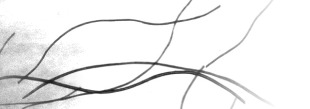Image caption and calibration - June 2019
—
filed under:
News
Today we would like to revisit three things that are crucial when working with the FibreShape, PowderShape or DiaShape system in order to guarantee continuously reproducible results.
- When was the last time you calibrated your scanner? Accidentally changed scanner settings can change the measurement results significantly! The resolution and the grey value histogram are two examples to name.
- The most common imaging systems are scanners controlled by the SilverFast Ai Software. In SilverFast Ai, the color calibration and brightness need to be verified. This is especially important for the measurement of fibre thickness. To make sure that the scanner settings remain the same you can save the default settings as a profile in the SilverFast Software and restore them on every use. You find more information about the IT8 standard test in chapter 5.2 of the manual.
- Finally, make sure that the specimen aligns well with the focal plane. The system is delivered with a glass plate or container. This glass insert is necessary to ensure that the fibers are in focus in transmission mode. The verification of the focus plane is done with the USAF 1951 test (see manual 5.2.2).
If you checked the key ingredients to reproducible and successful quality control you can start with your analysis project.
Sincerely
Your IST AG
- Current project: Length measurement of polyamid staple fibers with a length of 0,1 mm to 40 cm. Why is the length analysis important?
- Version 6.2.1 is available. Whats new?
- The owner of a FibreShape, PowderShape or DiaShape PRO version can create a QC (quality control) account for a second or third user. This QC user can make measurements with the given measurement profiles but may not change measurement settings.
- The scanned image can now be rotated by 90°. This is important for the analysis of glass fibers and carbon fibers. Glass fibers for example have an angle dependent contrast.
- Reporting: In the analysis of the percentiles you now have access to the information of how much material is represented in a certain percentile.
-
Are you interested to know how to predict the quality, strength and uniformity of a fiber reinforced composite? Click here.
- 28 - 29 of October 2019, Geel (Belgium): ISO Meeting
- 10 - 12 of September 2019, Stuttgart (Germany): Composites Europe
- 7 - 8 of November 2019, Chemnitz (Germany): Technomer
- 28 - 29 of November 2019, Dresden (Germany): Aachen - Dresden - Denkendorf International Textile Conference





